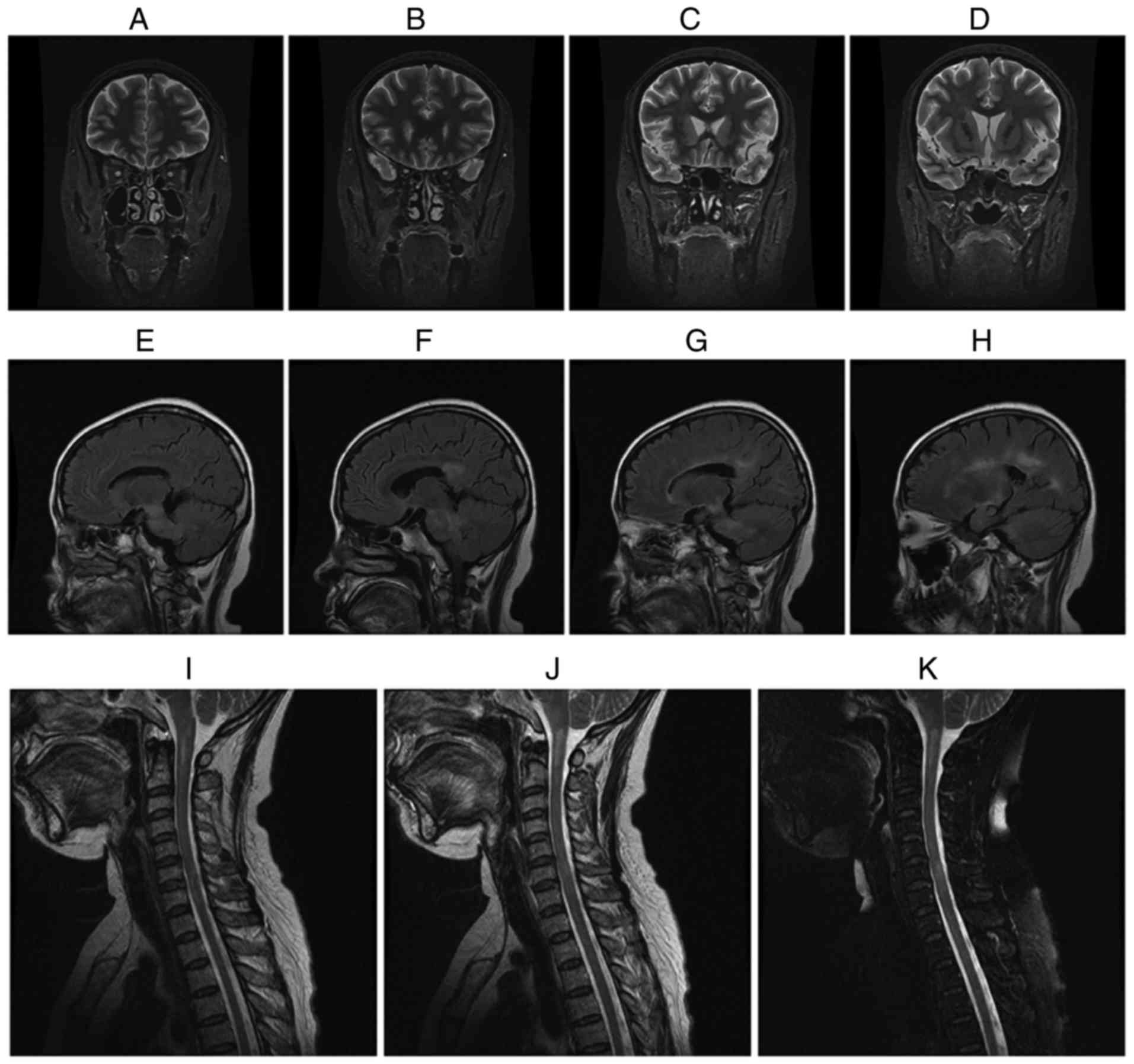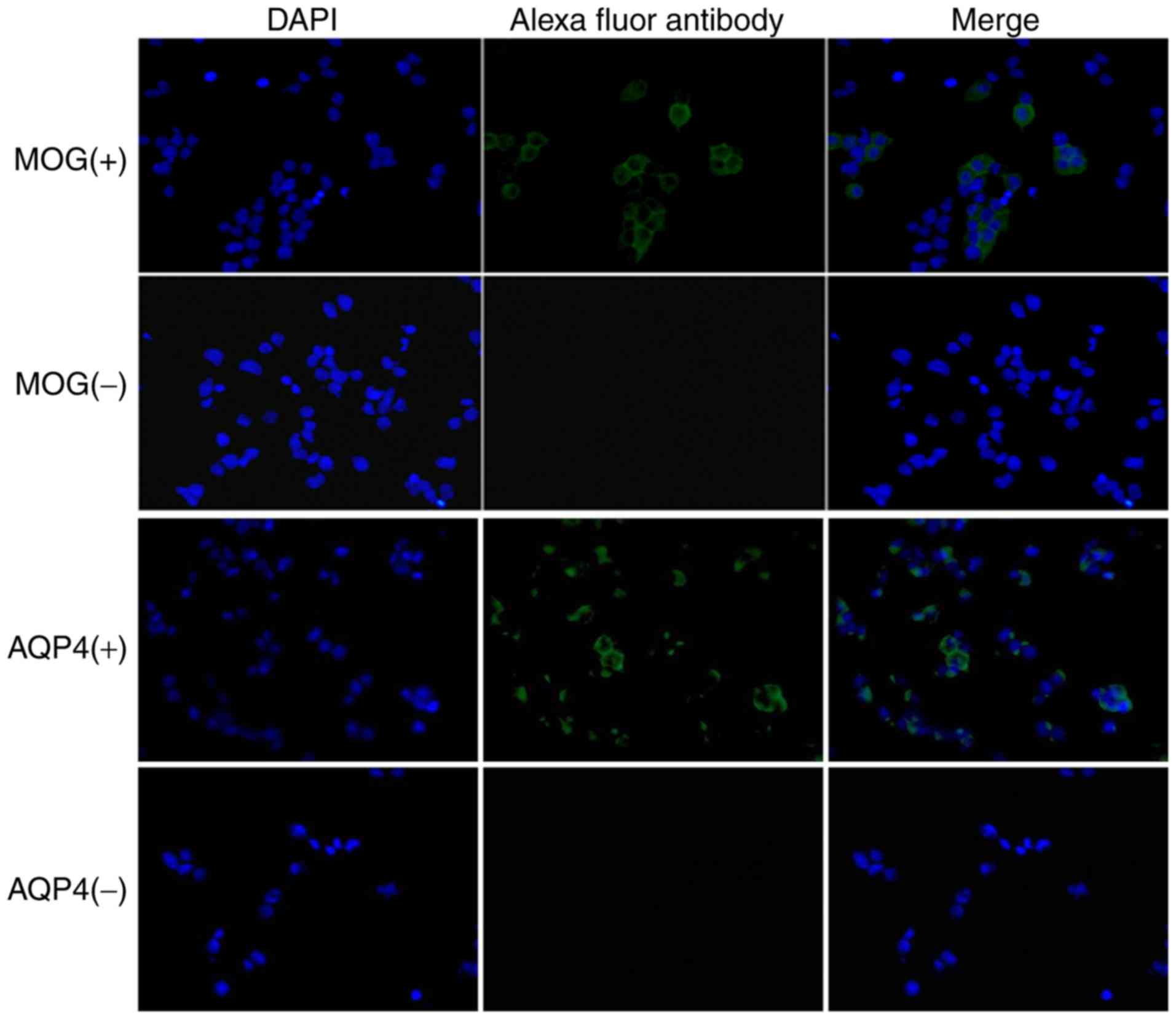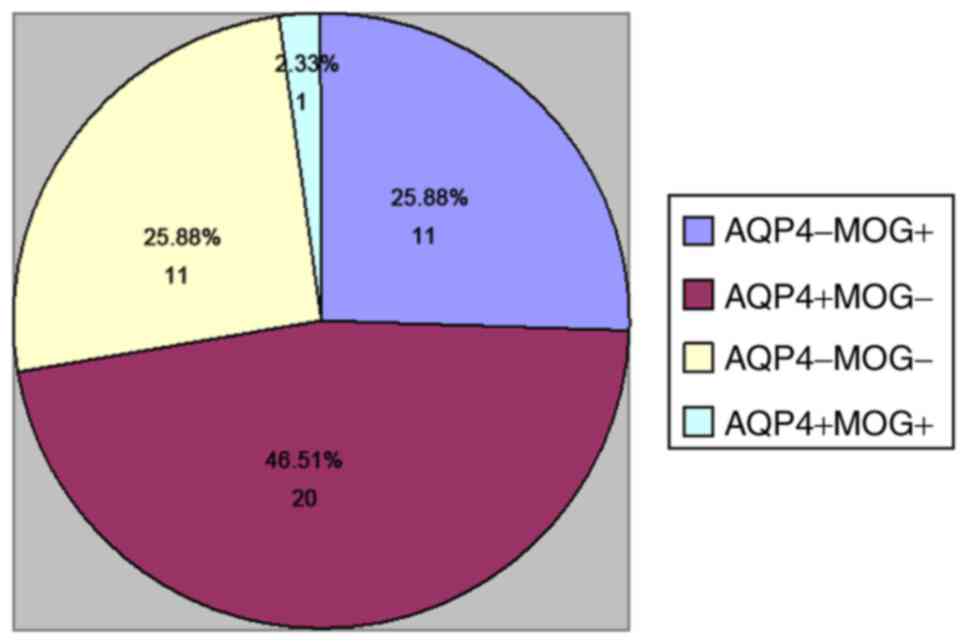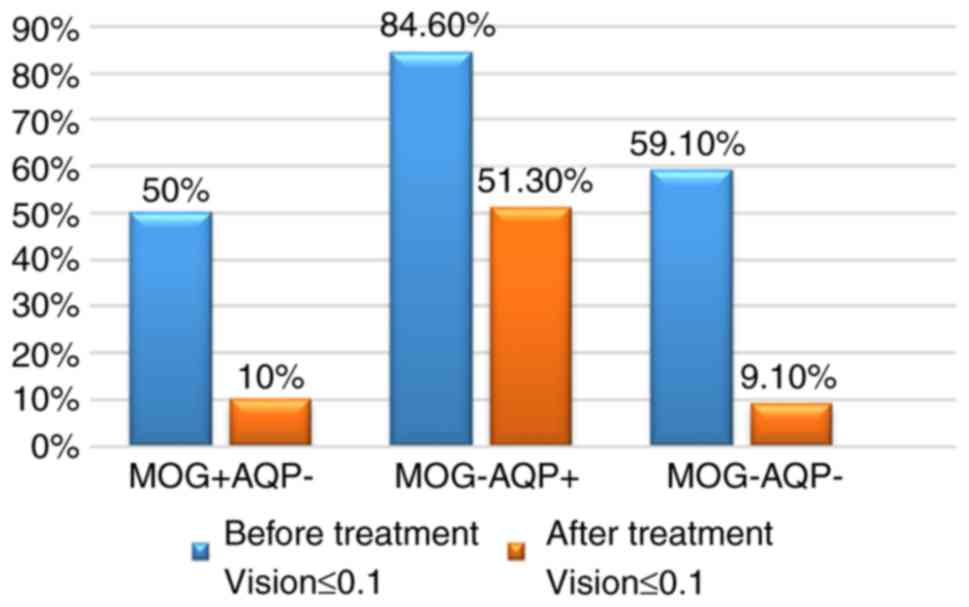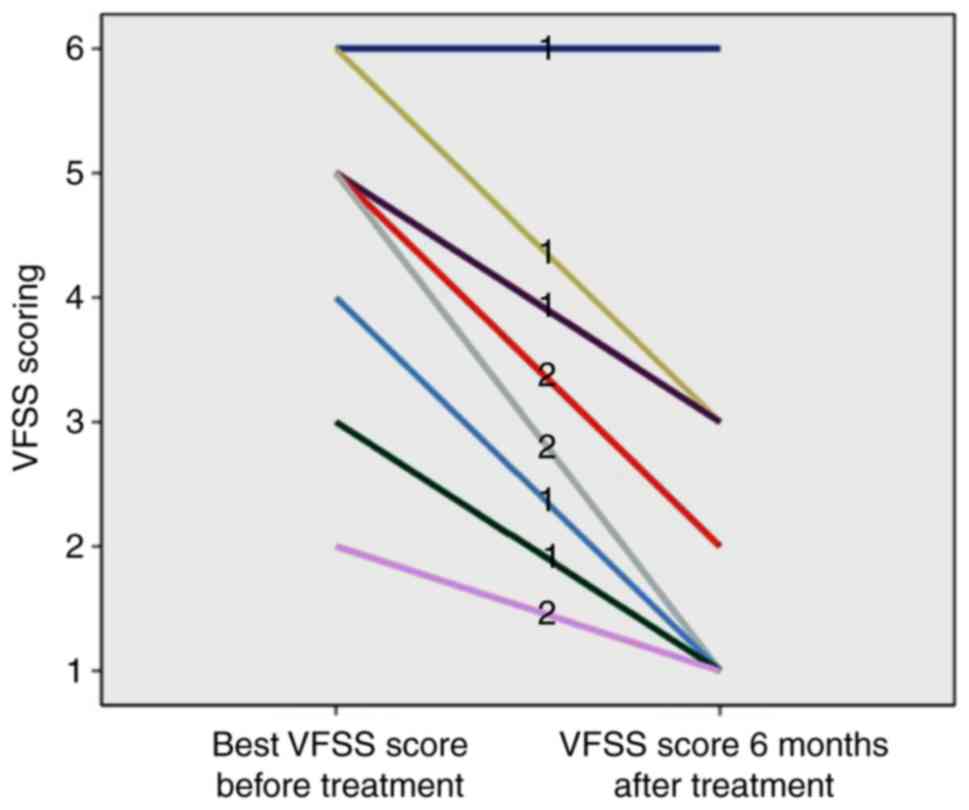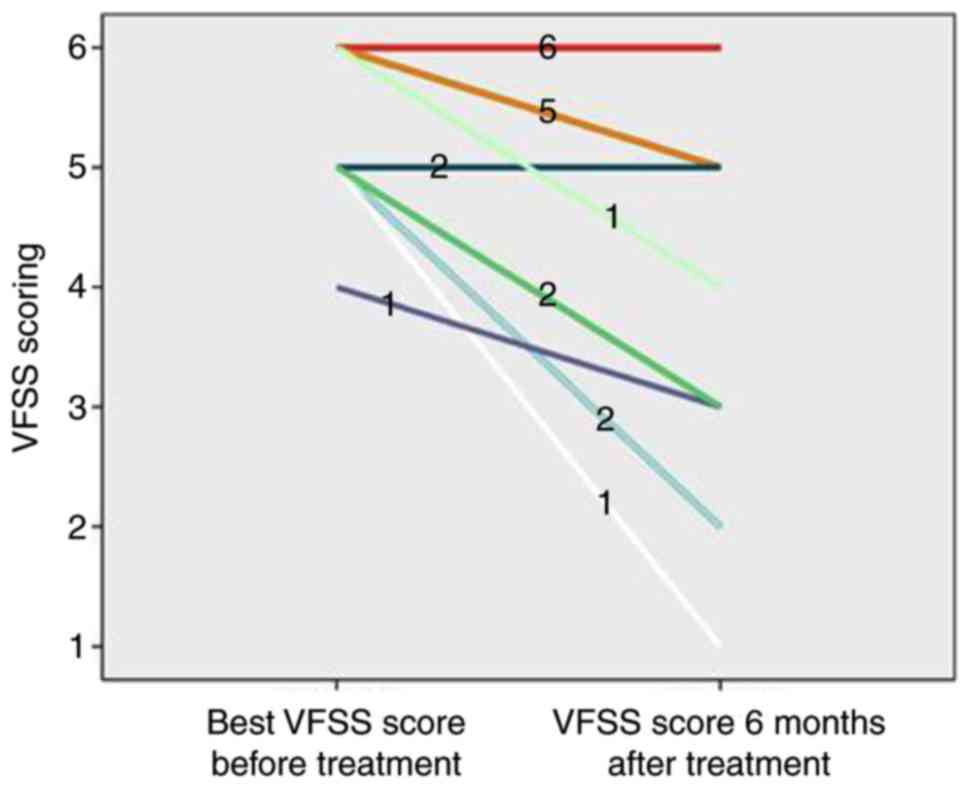Diagnostic implications of MOG/AQP4 antibodies in recurrent optic neuritis
- Authors:
- Published online on: June 8, 2018 https://doi.org/10.3892/etm.2018.6273
- Pages: 950-958
Metrics: Total
Views: 0 (Spandidos Publications: | PMC Statistics: )
Total PDF Downloads: 0 (Spandidos Publications: | PMC Statistics: )
Abstract
The present study aimed to detect myelin oligodendrocyte glycoprotein (MOG) and aquaporin‑4 (AQP4) antibodies in serum specimens of patients with recurrent optic neuritis (RON) through establishing 293 cells with stable expression of MOG and the complete genomic sequence as the substrate using a cell‑based assay (CBA). Furthermore, the clinical features of MOG antibody‑positive recurrent optic neuritis (MOG‑RON) were assessed. A total of 43 RON patients admitted to Beijing Tongren Hospital from December 2014 to May 2015 were enrolled, including 11 males and 32 females. The serum was collected from all patients, and the MOG and AQP4 antibodies were detected via the CBA. According to the results, the 43 patients were divided into four groups, namely the MOG antibody‑positive group (n=11), the AQP4 antibody‑positive group (n=20), the MOG/AQP4 antibody‑positive group (n=1) and the MOG/AQP4 antibody‑negative group (n=11). Clinical data were collected and all patients were followed up for 6 months, with parameters observed including the visual acuity, visual field and ocular fundus. The differences in the demographics, clinical features, characteristics of imaging examination, vision at onset and visual function recovery at 6 months after treatment were compared among the different groups. The characteristics of MOG antibody‑positive RON were summarized. Of the 43 RON patients, 2.33% was both MOG and AQP4 antibody‑positive, 27.91% were MOG antibody‑positive. Compared with the AQP4‑RON patients, there were relatively less MOG‑RON patients (63.6 vs. 95.0%) and the canal segment and intracranial segment of the optic canal were less involved (P<0.05). The visual acuity at onset of MOG‑RON was not inferior to that of AQP4‑RON, and the visual recovery degree of MOG‑RON was better (P<0.05). MOG antibody may be detected in the serum of certain RON patients, which have unique and different characteristics from AQP4 antibody‑positive RON patients, so it may be used as a prognostic biomarker for RON. Furthermore, MOG antibody is present in the serum of patients with neuromyelitis optica spectrum disorders and may be a potential biomarker for these conditions.



